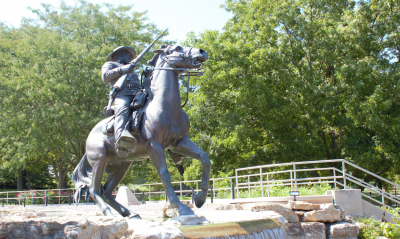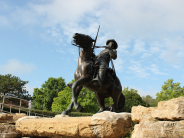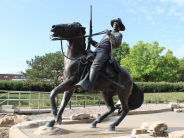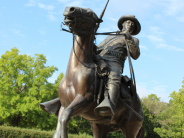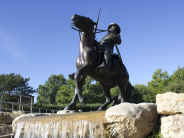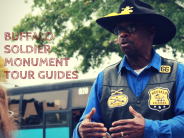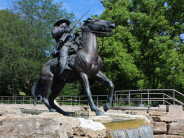Buffalo Soldier Monument
Initiated by General Colin Powell, the Buffalo Soldier monument was dedicated in 1992 to the memory of the 9th and 10th Cavalry Regiments of the U.S. Army.
During the American Civil War, the U.S. Government formed regiments known as the United States Colored Troops. In 1866 Congress reorganized the Army and authorized the formation of two regiments of black cavalry soldiers as the 9th and 10th U.S. Cavalry and four infantry regiments designated as the 38th, 39th, 40th, and 41st Infantry Regiments. Black soldiers enlisted for five years and received $13.00 a month.
The 10th Cavalry was organized on September 21, 1866, at Fort Leavenworth, Kansas with Colonel Benjamin H. Grierson as Commanding Officer.
The 10th Cavalry served in the following campaigns: Indian Wars, War with Spain, Philippine Insurrections, and World War II. They were inactivated on March 20, 1944.
The Buffalo Soldier’s main charge was to protect settlers as they moved west and to support the westward expansion by building the infrastructure needed for new settlements to flourish.
The Soldiers of the 10th Cavalry performed duties such as building forts and roads, riding shotgun on stagecoaches and mail routes, escorting cattle drives and wagon trains, protecting the builders of the railroads, installing telegraph lines and protecting the settlers in areas plagued by bandits and American Indians. The American West has fascinated people all over the world since settlers first crossed the Mississippi; however, unless it includes the contributions of the Buffalo Soldiers, any story about “How the West was Won” is incomplete without their story.

